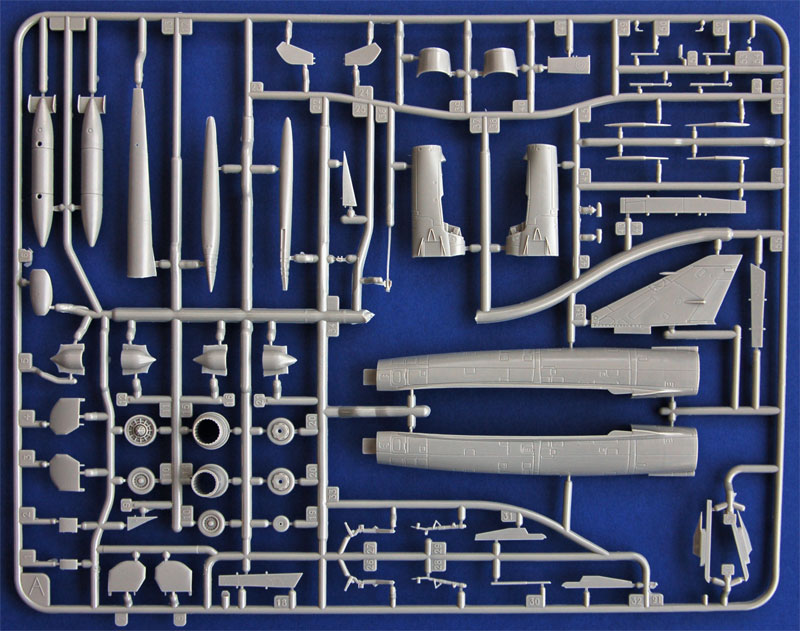Model kits have been available in some form or another since it was practical to make them. Balsa wood planes and boats appeared early on, and when plastic injection moulding became cost effective after World War 2, all manner of model kits began to appear, including cars. As with many things in the 1950s, the big commercial strides were made in the United States, where real car manufacturers were quick to catch on to the concept of plastic model cars as a promotional tool. The bigger brands offered ‘promos’ – 1/25-scale plastic replicas of their new cars to give to children, all part of securing a sale with ‘Mom and Pop’. These promo models were also offered as kits which required assembly, and in this manner the US scale model car kit as it has existed for the last several decades was born.
Such was the origin of the kit in question today: the AMT 1965 Ford Galaxie 500. Back then, American car brands operated a marketing technique called planned obsolescence, which is to say they purposely released a slightly revised model every year to encourage owners to return to the dealership and trade up. That meant the promo models changed each year too, and as such kit manufacturer AMT produced a new ’65 Galaxie kit for dealers to promote their new model for that year. Of course, promos were often released as model kits available in hobby stores, as this kit was. AMT continued to produce it on and off for decades, along with many other similar models based on dealer promos, and that gave us the back catalogue of American model car kits which has formed the backbone of the hobby in the US for so long.
I picked up this lit on Ebay a few years ago, during a phase in which I was mad about crisp 1960s styled cars. When it arrived, I was dismayed to find that many parts had been removed from the sprues and were loose in the box with no part numbers. Anyway, I got stuck in and gave the body a lovely coat of Peugeot bronze metallic paint, with a few coats of lacquer. I decided to follow the 1960s theme by adding a vinyl roof: this was pretty easy - all I did was mask off the rest of the body and give the roof a few light coats of Plasti-cote stain black spray paint, which gave a satin black and slightly uneven finish like a vinyl roof. The same satin black was used more carefully to give a vinyl look to the interior.
The Galaxie 500 has a lovely Ford 427 (7-litre) big block V8 engine, and this was built and painted with a blue similar to Ford engine blue. I also added sparkplug wires using 0.3mm black wire, and painted the relatively simple chassis and underside in suitable colours. The kit includes custom parts like 5-spoke racing wheels and a supercharger, but I decided to keep it razor-sharp and stock, 1960s style: some cars in my view benefit from being left factory standard, and the Galaxie is one of them.
To complete the sharp original look, I decided to use Bare Metal Foil (BMF) to dress the model’s window edges and body trim. BMF is a very thin self-adhesive chrome foil designed for this job, and with a lot of patience a very realistic look can be achieved. The foil has to be cut roughly to size, and is then placed onto the relevant area and rubbed down firmly with something like a paintbrush handle. After that, a sharp scalpel blade is used to trim the foil to size: if on a window frame for example, the blade is run along the edges of the frame leaving the chrome foil in place on the trim. I have so far done the window frames but still have to do the chrome side strips.
Next jobs on Project Galaxie: finish the chrome. Fit the glazing. Assemble the main parts and add finishing pieces.

















